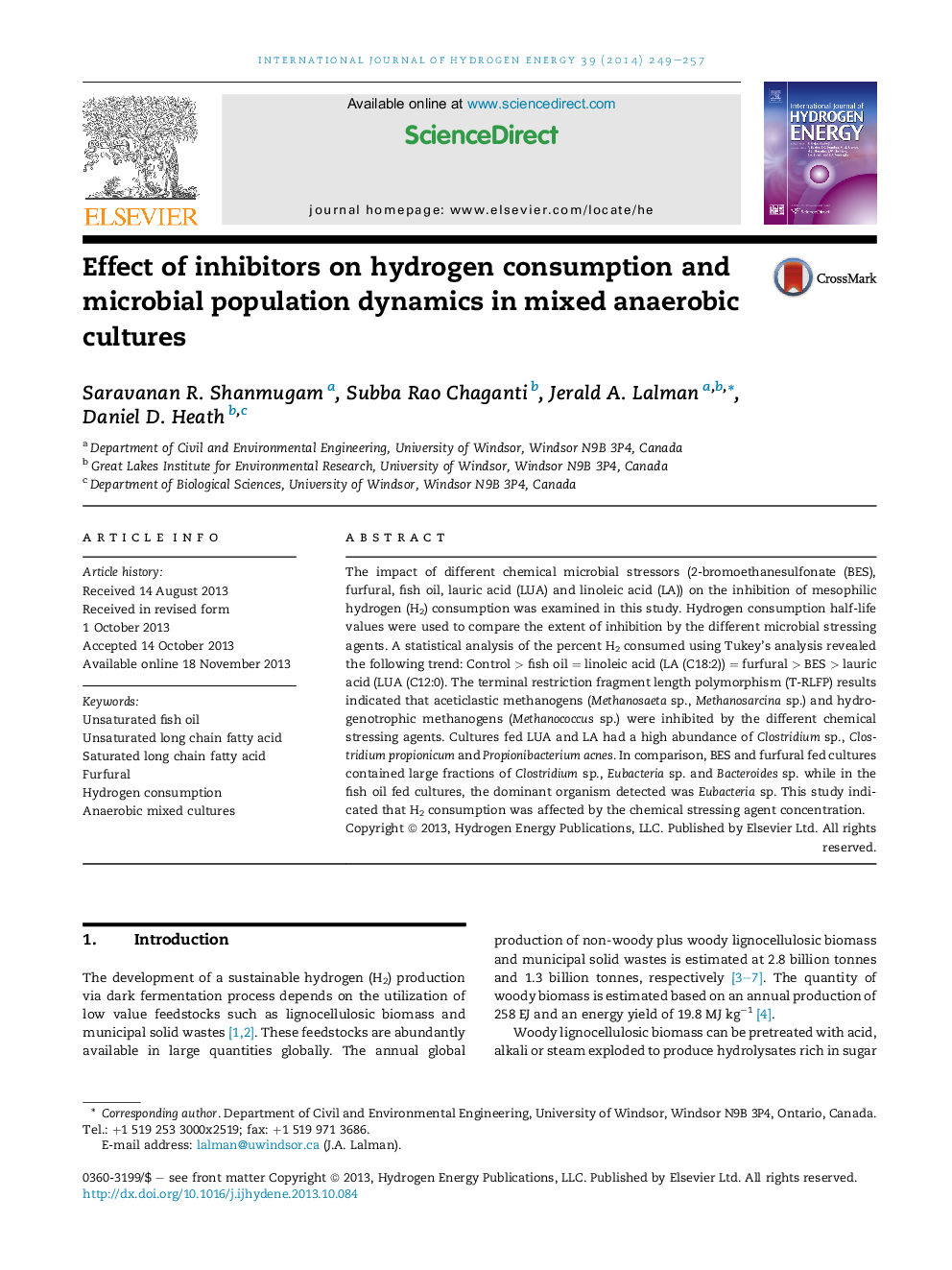| Article ID | Journal | Published Year | Pages | File Type |
|---|---|---|---|---|
| 1273936 | International Journal of Hydrogen Energy | 2014 | 9 Pages |
•Effect of chemical stressing agents on mesophilic H2 consumption was examined.•Different stressors caused changes in fermentation metabolic profile.•Methanogens were absent in stress treated cultures.•Canonical correspondence analysis showed good species–environment correlation.
The impact of different chemical microbial stressors (2-bromoethanesulfonate (BES), furfural, fish oil, lauric acid (LUA) and linoleic acid (LA)) on the inhibition of mesophilic hydrogen (H2) consumption was examined in this study. Hydrogen consumption half-life values were used to compare the extent of inhibition by the different microbial stressing agents. A statistical analysis of the percent H2 consumed using Tukey's analysis revealed the following trend: Control > fish oil = linoleic acid (LA (C18:2)) = furfural > BES > lauric acid (LUA (C12:0). The terminal restriction fragment length polymorphism (T-RLFP) results indicated that aceticlastic methanogens (Methanosaeta sp., Methanosarcina sp.) and hydrogenotrophic methanogens (Methanococcus sp.) were inhibited by the different chemical stressing agents. Cultures fed LUA and LA had a high abundance of Clostridium sp., Clostridium propionicum and Propionibacterium acnes. In comparison, BES and furfural fed cultures contained large fractions of Clostridium sp., Eubacteria sp. and Bacteroides sp. while in the fish oil fed cultures, the dominant organism detected was Eubacteria sp. This study indicated that H2 consumption was affected by the chemical stressing agent concentration.
Graphical abstractFigure optionsDownload full-size imageDownload as PowerPoint slide
